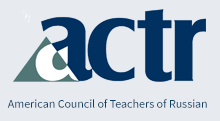Russian Language Journal
Keywords
Media literacy education, Russian language, discourse analysis
Abstract
The proficiency movement of the 1980s and ‘90s in foreign language teaching and learning demonstrated that U. S. students can attain Intermediate-level proficiency by the end of a four-year post-secondary course of study. Language programs can now pay more attention to enabling students to reach the Advanced1 and Superior levels (ACTFL, 2012; Interagency Language Roundtable (ILR); Martin, 2020, p. 43). One can observe the particular demand for ILR 3/4 speakers from the U. S. government in the diversity of state-sponsored initiatives in foreign languages aiming for Superior-level (ILR 3/3+) and higher proficiency. Understandably, the need for speakers of Russian at the Superior and Distinguished levels (ILR 4/4+/5) has increased since the February 2022 full-scale Russian invasion of Ukraine. To support the demand for ILR 3/4 speakers, scholars have been discussing how to bring students to these proficiency levels most effectively.
Recommended Citation
Mukhortova, O. (2023). Constructing a Course on Russian Media Analysis for Learners at ILR 3+/4 Proficiency. Russian Language Journal, 73(2). https://doi.org/10.70163/0036-0252.1351
Included in
Curriculum and Social Inquiry Commons, Language and Literacy Education Commons, Slavic Languages and Societies Commons

